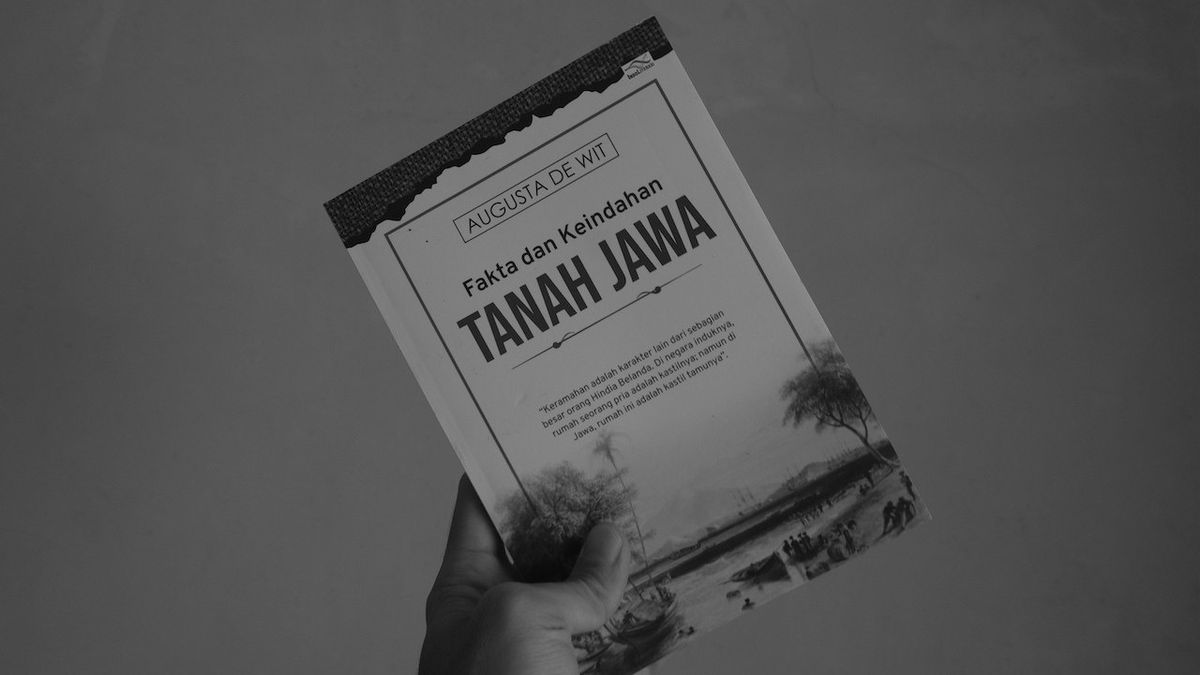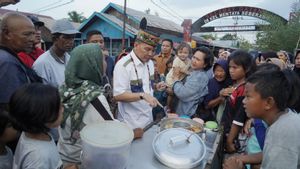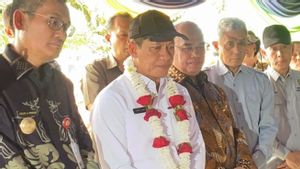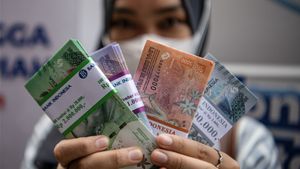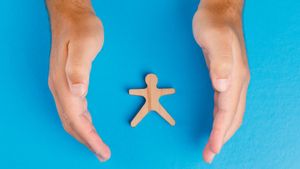JAKARTA - Jakarta is a land of a million charms. Even since it was named Batavia, the city which was nicknamed the Queen of the East has become a favorite destination for foreign tourists. Various travel notes from world celebrities such as Alfred Russel Wallace (Naturalist), Justus Van Maurik (writer), and Tome Pires (writer) are evident. But among these, the novelist from Holland, Augusta De Wit, wrote the most about Batavia on his trip to Java.
In his book entitled Facts and Beauty of the Land of Java (1905), De wit wrote about his travels around Java in the 1900s. The impression he wrote about the island of Java, especially Batavia, was quite interesting. The island of Java, said De Wit, is a fantasy land with fertile land, friendly people, but an extreme climate for whites.
De Wit also paid attention to every detail of the beauty of the rivers, hills, valleys, and his admiration for the excellent irrigation of the people. However, in his notes, De Wit did not only focus on cities, villages, natural scenery. Because De Wit boldly expressed his impression of the native people.
Instead of telling about the superiority of white people, De Wit appeared bold by writing the Batavia story from two sides. The European side and the native side. This is illustrated by De Wit's statement which reads: "To properly judge the manners and customs of a country is to see them from an indigenous perspective."
Then, one that is not less interesting is when De Wit tells about his admiration for the tradition of banquets in the style of Rijsttafel (rice table), kebaya dress, dance party at the Governor General's palace, the view of the native people bathing at the river. He reviewed all of this interestingly. So happy, De Wit revealed a narrative of admiration for his journey like exploring a dream land.
“I know that delusion is as real and alive as fact, that poetry and romance are faithful representations of things as they really are, as they are the driest. prose could be, ”wrote De Wit.
Kebaya dressIn his observations when he arrived in Batavia, De Wit noticed many things that were different from European women in general. The difference was seen from the European dress code. They seem to have adapted to the local climate so that in terms of clothing they choose a cool kebaya with a little touch of modification.
On that basis, the kebaya has become a mandatory outfit for European women to wear everyday when doing activities at home. We have also discussed at length related to kebaya in the article "Clothing Without Social Class is called Kebaya."
"I half believed that the dinner table of rice, jarik jarik and kebaya, and Javanese servants must be just a dream, until I was convinced otherwise by the sight of skinny brown hands stretching out to replace my fish plate with asparagus," wrote De Wit on page 22. .
Dance partySome of the other epics that De Wit published are the lavish lifestyle of the governor-generals recorded by people who have traveled to the archipelago. Those who visited the Dutch East Indies, especially Batavia to explore the beauty of tourism, were always welcomed by the Company. Regarding the party of the Governor General of the Dutch East Indies, we have reviewed in the inscription "The Mad Party and Spree of the Governor-General of the Dutch East Indies."
In fact, the governor-generals often invited travelers to join parties at his residence. For the governors-general, showing off the luxury in the style of the Dutch East Indies was a strategy so that other travelers came to the Indies. One of the cartoons who was invited to join the dance was De Wit.
“Shortly after my arrival, I was invited to attend a ball at the palace. At that time I was living with a friend in the Salemba area. And we drove for almost an hour through roads shaded with banyan trees, ”said De Wit on page 60.
Shower at timesFor De Wit, a unique view typical of Batavia that does not exist in other countries in Europe is the sight of local residents bathing at times. Watching people take a bath at times became De Wit's most enchanting experience during his time in the colony.
“At the edges, many natives took off their clothes to bathe. The men ran down the slope of the riverbank, jumped into the river and dived in it; when they reappeared, their naked bodies were like numerous bronze statues, ”De Wit recounts on page 83.
Those are some excerpts of interesting stories from De Wit's book. More fully, he also told about other experiences of traveling in Batavia. Like when traveling on the Tanjung Priok beach, hearing local residents who believe in the mystical Nyi Blorong, about crocodiles in Batavia and so on. Therefore, the existence of this book is important. Important for science, and important for the history of the nation.
DetailBook Title: Facts and Beauty of Java Land
Author: Augusta De Wit
First Published: 1905 (Indonesian Version: 2019)
Publisher: Indoliteration
Number of Pages: 214
The English, Chinese, Japanese, Arabic, and French versions are automatically generated by the AI. So there may still be inaccuracies in translating, please always see Indonesian as our main language. (system supported by DigitalSiber.id)
